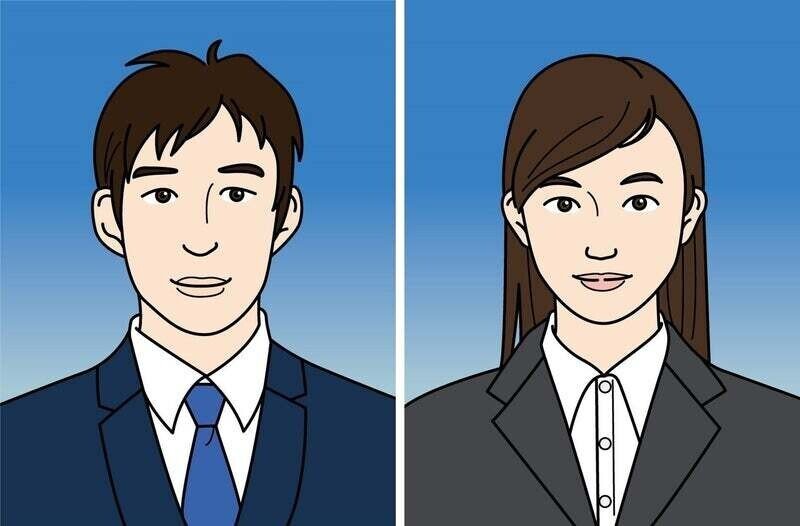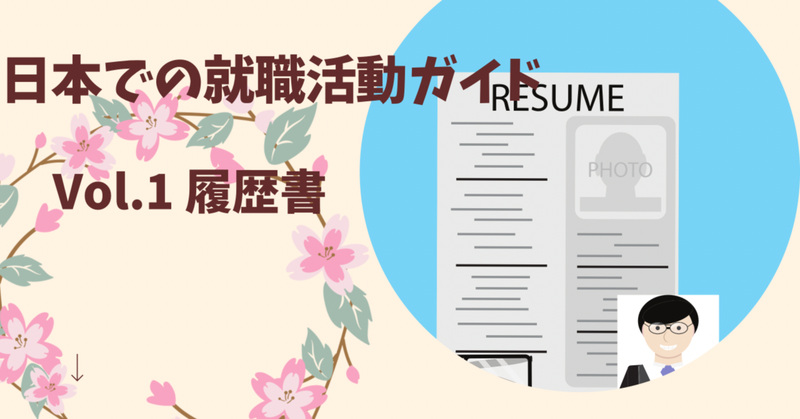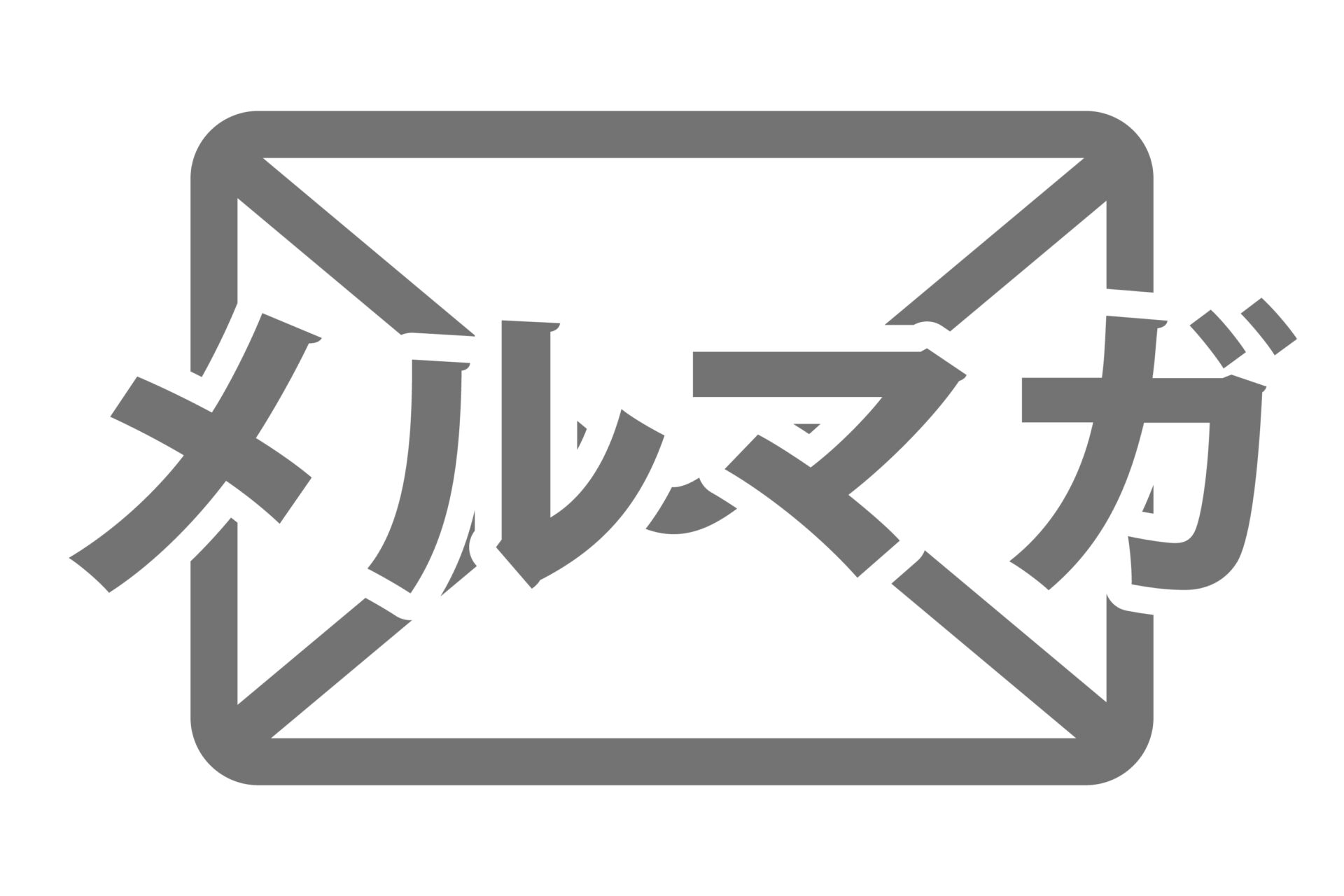Hello everyone!
At Living in Peace (LIP), our posts are focused on providing basics to foreign-born students on the Japanese job-hunting process, referred to as “Shushoku Katsudou”, or simply, “Shukatsu”, as we will refer to it in this post.
In the Shukatsu process, it is required to create the “Rirekisho” and “Entry Sheet”. Both are simple yet filled with cultural nuances that trick Japan natives. In the post, we will focus first on the Rirekisho. For reference, there is a sample available for download at the end.
◆The Rirekisho Basics
It is important for your Rirekisho to be organized, simple, and error-free.
●There are different types of rirekisho templates. For new grads, there are two main types: the JIS format and the school-specific format.
JIS format: This is widely considered the standard or go-to format.
School-specific format: Your school should provide, for download or sale at its store, a school-branded rirekisho for you to use.
●Rirekisho are written either on a computer, or by hand, depending on the firm. If you type, the “Gothic” and “Mincho (明朝)” are standard. Many companies still require hand-written Rirekisho. When handwriting, be sure to use a black-ink pen and to write very cleanly. You must write carefully and with no errors. You may not cross-out or use white-out to fix errors. If you make a mistake, you must re-write the entire Rirekisho.
※TIP
Companies that request hand-written Rirekisho often look for proper handwriting. Be sure you write everything with extreme care and attention to leave the best impression.
●When writing the year or date you may use the Western format (20XX) or Japanese format (令和XX年) but be sure you consistently use the same format throughout the document.
●When writing your name and address there will be boxes for “Furigana”. In these boxes, you either write in Hiragana or Katakana, depending on which “Furigana” is written in. For example:
ふりがな = ひらがな = Hiragana
フリガナ = カタカナ = Katakana
●Many modern Rirekisho no longer have a space for you to select your gender or paste a professional headshot. Some companies still require this information, so be sure the Rirekisho template you use aligns with the company’s application requirements.

◆Your Professional Headshot
Many companies require new graduates to submit a professional headshot. You must include one if there is a space for it on the Rirekisho.
The Rirekisho headshot is typically 4cm x 3cm (height by width). The background color must be white or blue. You must not use a selfie. Either use one of the many ID Photo Booths in your town or city, or hire a professional photographer to take the picture.
When taking your picture:
●Clothing: A formal Shukatsu suit / attire (typically a black suit)
●Hair: Brushed and clean. If you have bangs, they must not cover your eyes. Those who have long hair, make sure it all falls to your back / behind your shoulders. Finally, we recommend brushing your hair behind your ears, as research shows this leaves a more favorable impression of you.
●Make-up: Light make-up is appropriate
●Facial expression: Calm. Do not smile and show your teeth.
●Posture and framing: Stand or sit straight and lift your chin. Position yourself directly in the center of the frame, showing from your chest to the top of your head. Ensure there is space between the top of your head and the top of the picture frame.

Before attaching your picture to your Rirekisho, write your name and university on the back of the photo. In the event it falls off, they will know whose application the photo belongs to. When attaching your picture, we recommend using a glue stick. Things like staples and tape are very noticeable, and also less secure.
※TIP
When mailing your application, ensure you enclose it with glue. Just like the picture, you want the documents to stay secure. Using anything else means the envelope may open in transit and your application may never arrive.
◆Education
In writing your Rirekisho, you separate your education and work history and write in order from oldest to newest.
●You begin the Education section from your middle school.
●There must be separate rows for when you began and when you graduated from a school:
【Good Example】20XX年 ○○大学 ○○学部 ○○学科 入学
20XX年 ○○大学 ○○学部 ○○学科 卒業見込み
【Bad Example】20XX年~20XX年 ○○高等学校 ○○学部 ○○学科
●In addition to the school’s name, when appropriate, you must specify your major or field of study.
●If you have not yet graduated, you will write your expected graduation date and write 卒業見込み (Sotsugyou mikomi).
●Write the school’s full name.
【Good Example】東京都立 ABC高等学校 入学
【Bad Example】ABC高校 入学
Any education at short-term programs, or educational programs you attended multiple times, it is best to create a separate “other” section to highlight these. Remember, a Rirekisho needs to be simple!
※TIP
Many employers are not familiar with the names of overseas institutions. In such scenarios, writing the type of school in parentheses, such as (大学) or (高等学校), will make it easier for the employer reading your Rirekisho to understand your background
◆Internships, part-time work, other professional experiences
Most students in Japan do not have much professional experience beyond an internship or their part-time work. So, the professional background section is typically short.
You do not fill this space with part-time work you did while attending school, or short-term (handful of days) internship. Doing so would result in a long, and complicated Rirekisho. It will also leave an impression that you do not stay in a workplace for very long, a concern you do not want to leave on anyone in Japan.
If there are specific experiences, relevant to the company you are applying to, or formal work you did while not attending class, you can, again, put this into an “other” (その他の経歴)section.
◆Qualifications and licenses
It is important to write any qualifications by their full name. For example, a JLPT N3 holder should not write just N3.” The proper name is “Japanese Language Proficiency Test, N3”. Avoid writing anything that is not directly relevant to the work or your Japanese ability.
◆Skills and interests
This section is a critical area to display your unique, outstanding characteristics. For example, you can highlight skills such as, “Highly collaborative,” “Consistently see a task to its end,” “Flexible mindset”, etc.
【Good Example】Eating good food. When looking for new places to eat, I have no issue traveling to a new place, speaking with the locals, and discovering great places most people do not know about and blog about my experiences.
【Bad Example】I like eating.
◆Sample Rirekisho
Attached below is a sample Rirekisho for your use and reference.
—————————————————————————–
Now that we have covered the essentials of writing a Rirekisho, next post we will cover the essentials for the “Entry Sheet.” In addition, we will share tips on how to highlight your strengths (自己PR), and why you are applying to a specific company (志望動機).
Author: Mayu Miyamoto / Translation: Ashton Imber







